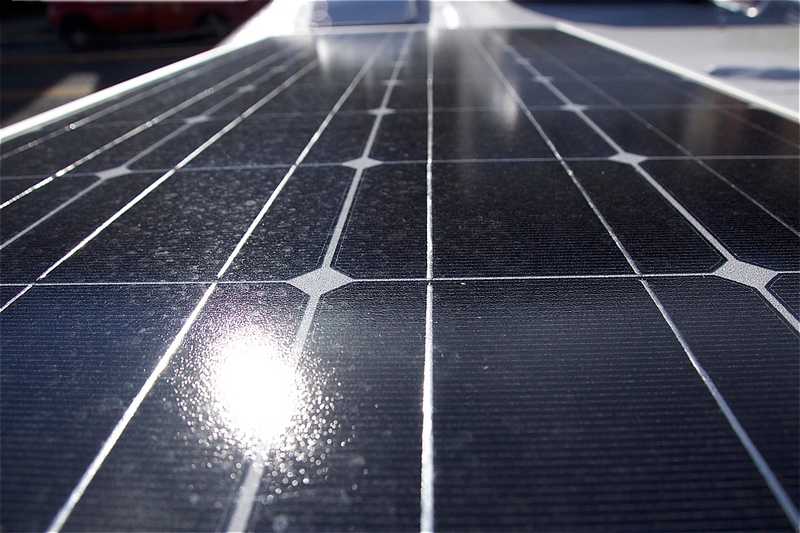Installation of a home solar panel is a major economic development for a large variety of homeowners. There are many distinct variables to consider when looking at solar enterprises’ discounts, and those ingredients have solar quality and save. It can support assessing the various solar panels and towers for your house so that you have a choice amongst the best Solar Panel. It is carrying out a photovoltaic installation. One of the questions that it is we must ask ourselves is which solar panel do I choose?

There are many in the market, and at the CHINT PV module, they want to help you with this task.
Panel size
In my opinion, the panel size is one of the most important parameters. We must sketch to see how we will place the panels and see how much they occupy. It is also important to determine whether we have the means to transfer them. There are massive panels, and when we go up to the roof, it becomes impossible.
Nominal Voltage
The nominal voltage of a solar panel is usually either 12 volts or 24 volts. These data are important to take into account. Normally, for large installations, 48 volts are usually taken (the higher the voltage, the smaller the cable section), so the rest of the components, inverter, regulator, batteries … are chosen at 48 volts. Therefore, the idea is to mount 24-volt solar panels with the following scheme.
Later you can put as many photovoltaic panels as we want in paroral to increase the system’s power.
Nominal voltage is not usually found on the product data-sheet. They usually put the voltage at maximum power. The nominal voltage is the closest to the maximum power being the standard (12-24-48 Volts). Let’s look at the following example:
Power required
Solar panels differ from one to another according to their maximum working power Wp (peak watt). It means the maximum power it can reach. The maximum power is the multiplication of the Maximum Voltage by the Maximum Intensity.
P (Wp) = Vmax * Imax
To calculate the number of panels we need, we have to base ourselves on the place where we want to install (coordinates) and each panel’s power. Well, we need to calculate the Peak Solar Hours. These are tables that are found on the internet (in a future article, we will explain where to look for them), and it allows us to know for a given location (Madrid, Barcelona, Valencia …) the hours of solar that we will have in a given month year. For example, in Valencia, we have 4 Hours of Solar Pico for a 30º orientation in March. Well, a solar panel is located in Valencia with 150 WP of power. It will generate an energy of E = 4 * 150 = 600Wh.
In conclusion, when choosing a solar panel with a higher power, the more energy, it generates per day.
How much energy can a solar panel generate during a certain time?
The final part to size your solar system is the solar panels. A solar panel’s power rating is also given in watts (for example, it is a 10W solar panel). In theory, to calculate the power you can supply to the battery, you multiply the watts (from the solar panel) by the hours exposed to sunlight. In practice, it’s not a great way to calculate a solar panel’s performance, so we work with a few simple rules.
- In general, an average winter day in a place with only 1 hour of sun.
- An average summer in the same place will give you 6 hours of sun.
So in winter, a 10-watt panel will provide 10 watts of battery power. (10w x 1 = 10w) In summer, a 10w panel will provide 60w of battery power. (10w x 6 = 60w). Using the above calculation considers any losses in the regulator system, cables, and battery you may be using.
Other Aspects: Polycrystalline, Monocrystalline, yields, temperature.
Another less important aspect to consider is whether they are Monocrystalline and Polycrystalline. Monocrystalline normally has a higher performance than polycrystalline (they are made of purer silicon). That means that for a 250Wp panel, a monocrystalline will be smaller in size than a polycrystalline. Today, it does not have any kind of difference, and the returns are very similar.
The solar panel performance is something that should not matter to us when choosing it since what matters to us is the Power (Wp). If the cell’s performance is lower, the panel will have to be larger to achieve the same power. It is not an element to consider. Solar panels deteriorate their performance at higher temperatures. The data they give us in the “Data Sheet” is for 25º outdoors, being the worst when the temperature is higher. We will not take it into account unless we set up a facility in the desert.

